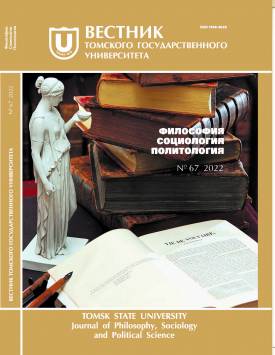Gender features of class solidarity of working-class youth
The research aims to identify positive and negative types of class solidarity among young people of the new working class in modern Russia and gender differences in their manifestation. In the article, the concept of a new working class is used, which is not associated with the upcoming digitalization of the economy or an increase in the level of workers’ professional education, but with the nature of labor, property relations and participation in management. The research methodology is based on the intersectional approach. The article contains the formulation and experience of solving a new research task -the formation of class solidarity of working-class youth in the context of the conflicting requirements of corporate culture and social status. Empirical data were obtained during the implementation of a collective project (2017-2021) on the territory of the Ural Federal District using quantitative and qualitative sociological methods (mass survey, biographical interview). It has been revealed that the absolute majority of young workers are aware of their class affiliation and the need for solidarity practices in defending their own interests, including opposition to the class of owners. The most deprived part of the working class today is the female group of young adults (25-29 years old), employed in the service sector of the economy. The author declares no conflicts of interests.
Keywords
solidarity, new working class, gender order, intersectional approachAuthors
| Name | Organization | |
| Gavriliuk Vera V. | Industrial University of Tyumen | gavriliuk@list.ru |
References

Gender features of class solidarity of working-class youth | Tomsk State University Journal of Philosophy, Sociology and Political Science. 2022. № 67. DOI: 10.17223/1998863X/67/9
